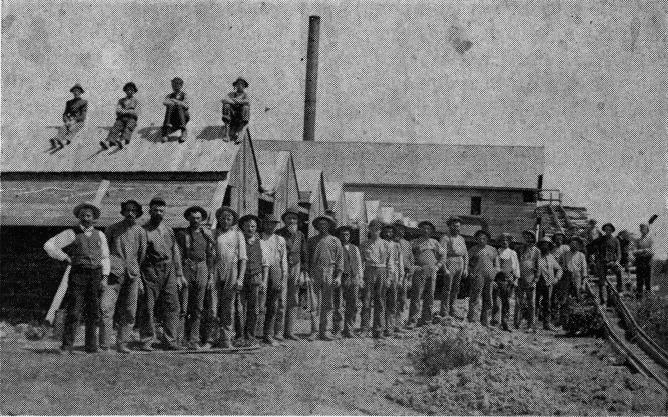
Finnish workmen at brick factory in Minneapolis.
Sioux Indians and began to erect forts and outposts in the area. A hundred years ago there was but one road across the countryside from St. Paul to the shore of the Mississippi above the falls, an Indian path which later became Hennepin Avenue in the middle of a metropolis. Below the falls used to stand a solitary mill, which Major Russhell had built there in 1822 with money furnished by the Government. In 1849 Colonel John H. Stevens owned a farm in the same area, and the first plan for a town was drawn up at his request in 1855, and in 1856 Minneapolis was born.
If the population in 1850 was but 538, it grew to 2,555 in 1860, and ten years later it was already 13,066. In another twenty years it grew to 164,738, and in 1950 it was more than half a million. In 1881 the Uusi Kotimaa, a Finnish-language newspaper just then commencing publication in Minneapolis, commented on this rapid growth : "There is much activity here, just as in any big city. New, huge brick buildings are being put up - and they are needed, for rents are high and living quarters are almost impossible to find." Later that same newspaper stated that 13 miles of buildings had been put up in Minneapolis in 1881, or 1,670 buildings with a total value of $5,000,000. It was indicative of a growth that was to continue; to develop Major Russhell's one solitary mill into a city with the world's largest flour mills, to embrace extensive industries employing thousands, to become
118